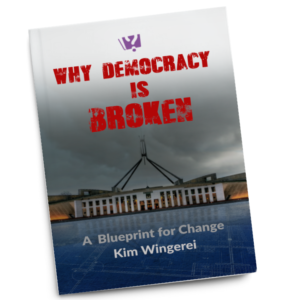This post was first published in the Australian Financial Review on 30 May 2020.

Immediately after the election had been put behind us the ACCC released NBN Co’s proposed new Special Access Undertaking which, if accepted, would govern the prices of fixed broadband services for most Australians until 2040. The ACCC also released a 52 page consultation paper which contained extensive criticism of NBN Co’s proposed broadband pricing regime.
It is a dense read but the key take out message from the ACCC’s consultation paper is that, if the SAU were accepted, Australians could expect the prices of all broadband services to rise inexorably to eventually be the same as the price of a 100Mbps download service. Australians would effectively be forced to pay much more for lower speed services as they rise to the price of the 100Mbps service, the price of which would also be able to rise at the rate of the Consumer Price Index plus 3%. This convergence of prices arises from NBN Co retaining the controversial CVC mechanism for lower speed services and ongoing growth in internet data usage.
The ACCC says the proposed pricing regime would ‘likely force households and businesses to purchase high speed inclusions at a price that does not represent fair value to them based on their requirements’.
One big conclusion to be drawn from what amounts to a likely rejection by the ACCC of NBN Co’s pricing undertaking is that the Coalition did not fix the NBN in its near nine years at the helm of the controversial state-owned company.
Back in 2013 the Coalition promised ‘fast, affordable and reliable broadband to all Australians’. There is not enough space to detail how the current NBN has not achieved the ‘fast’ and ‘reliable’ objectives but the ACCC have made it clear that the NBN, as a whole, is far from ‘affordable’.
The reason behind NBN Co’s desire to raise prices going forward is the need to re-coup the costs of building and operating the NBN. Taxpayers, and more recently private financial institutions, are forecast by NBN Co to provide total funding of $57 billion by 2024. This is approximately double the $29.5 billion of funding originally proposed by the Coalition.
NBN Co currently does not earn anywhere near enough revenue to justify this level of funding. In fact, the ACCC itself expects the special regulatory account used to track NBN Co’s losses to continue to grow for some time. The escalating prices above CPI and consequenet revenue increases proposed by NBN Co would eventually allow NBN to earn a return on this investment funding commensurate with normal market returns for similar businesses – assuming of course that NBN Co retains its near monopoly on fixed broadand services.
The Coalition made dramatic changes to the technologies used for the NBN – with a focus on re-using and upgrading the copper and cable TV networks originally built to provide landline telephony and Pay TV in the 20th century. However these networks need constant upgrades and maintenance and cannot deliver the higher speeds and capacity that consumers and business demand as internet usage continues to grow at approximately 30% per year (which is much higher than the 13% annual growth NBN Co have used in constructing its proposed undertakings). Further significant investment is necessary, as finally admitted by NBN Co in 2020 when it embarked on rolling out fibre to the home in many areas as per the original Labor plan.
This focus on technology rather than industry structure and reform has meant Australia suffers from having a state-owned monopoly at the heart of its digital economy rather than private enterprise and competition driving investment in infrastructure and innovation. As broadband technologies continue to evolve, with 5G and new satellite technologies in particular, NBN Co will face more competition which will make its economics even more challenging.
While the Coalition can claim some credit for a much better network (ie. compared to Telstra’s old ADSL network) being in place for the work from home revolution precipitated by COVID that came in 2020, it missed the opportunity to re-structure Australia’s fixed broadband industry so that Australia’s highly urbanised society would benefit from private capital and innovation. This was a key recommendation of the Coalition’s own inquiry it initiated in 2014 lead by Dr Michael Vertigan which would have seen the Coalition Multi-Technology Mix as the basis for separate operating companies and eventually private capital investment.
If followed, such a recommendation would have resulted in more efficient investment in the optical fibre that both fixed and mobile networks need to statisfy the ever-growing digital demands of the the economy. Even more importantly it would have allowed government to focus its attention on where the real market failure will always be in telecommunications – the rural and remote areas where the costs of both fixed and mobile networks will always exceed what the consumers and businesses in those areas are willing or able to pay.
Instead the Coalition has perpetuated the old 20th century myth that broadband networks are natural monopolies in our major urban centres. Unlike the electricity and water networks on which this fallacy is based, broadband networks are continually evolving through technological innovation to respond to the high growth of the digital economy. Private investment and innovation is driving this ongoing change – not regulatory and political game playing.
Unfortunately Australia faces further protracted regulatory and political disputation that will be a brake on investment and innovation in the core infrastructure we need to compete on an international stage in the digital economy.
That is the legacy of the Coalition’s nine years at the helm of the NBN.
The post ACCC highlights that the Lib-Nat Coalition did not fix the NBN appeared first on Gary McLaren.



